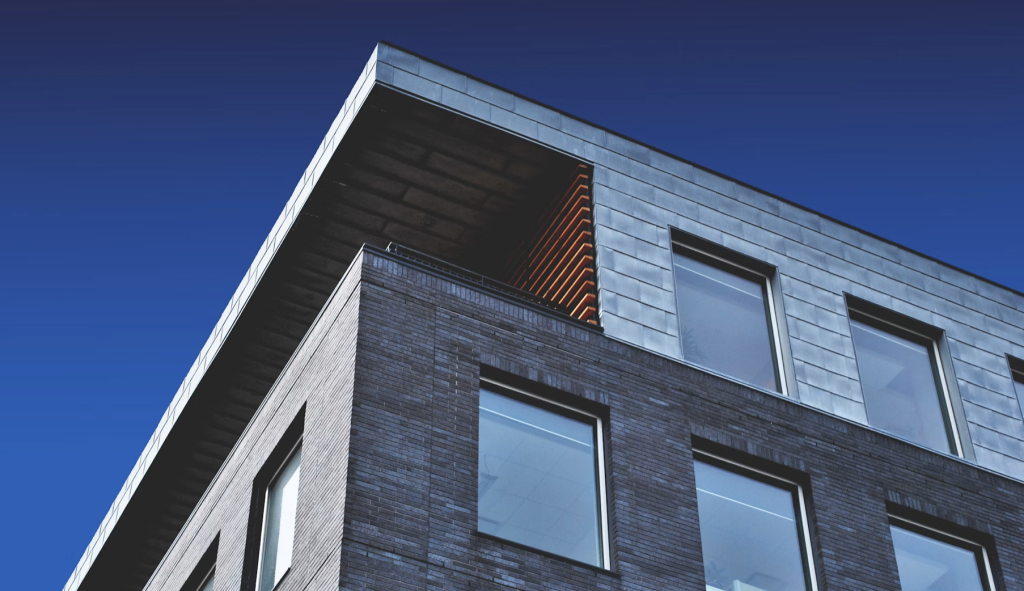Introduction
Japan’s rental market is both diverse and unique, offering everything from compact city apartments to spacious suburban houses. For foreigners, navigating this market can be challenging due to cultural differences, unfamiliar property types, and specific building features. Understanding the nuances of Japanese rental housing is essential to finding a home that meets your lifestyle, budget, and comfort expectations.
This comprehensive guide will explore the different property types, layouts, and performance features of rental apartments in Japan. It will provide practical advice for singles, couples, families, and short-term residents, helping you make informed choices and avoid common pitfalls.
Chapter 1: Japanese Rental Culture and Basics
1.1 Types of Rental Housing
In Japan, rental properties generally fall into three main categories:
- Apartments (Apato) – Typically 1–3 stories, often wooden or light steel-frame construction. Affordable, but less soundproof and with basic amenities.
- Condominiums (Manshon) – Multi-story reinforced concrete buildings with higher rent, better sound insulation, and more modern facilities.
- Single-Family Homes (Ikkodate) – Detached houses, usually found in suburban areas, offering privacy, gardens, and parking.
Additional options include serviced apartments and share houses, catering to short-term residents or young professionals.
1.2 Lease Requirements
Japanese rental contracts differ from Western norms. Key points include:
- Shikikin (Deposit): Refundable security deposit, usually 1–2 months’ rent.
- Reikin (Key Money): Non-refundable payment to the landlord, often 1–2 months’ rent.
- Guarantor Requirement: Many landlords require a Japanese guarantor. Foreigners often use guarantor companies for this purpose.
- Maintenance Fees: Monthly fees for building upkeep, garbage collection, or common area maintenance.
Foreigners should carefully review lease terms, as failure to understand these requirements can lead to unexpected costs or contract issues.
1.3 Understanding Layout Notation
Japanese apartments are labeled with a combination of numbers and letters to indicate layout:
- 1K: One room plus kitchen
- 1DK: One room plus dining/kitchen
- 1LDK: One room plus living, dining, and kitchen
- 2LDK, 3LDK: Two or three rooms plus living, dining, and kitchen areas
Knowing these abbreviations is essential for choosing a property that fits your lifestyle. For example, a 1LDK is often ideal for a couple or single professional working from home, while a 3LDK suits a family with children.
Chapter 2: Rental Property Types
2.1 Wood-Frame Apartments (Apato)
Wood-frame apartments are the most common type for budget-conscious renters.
- Pros: Lower rent, widely available, convenient for short-term stays.
- Cons: Poor sound insulation, less thermal comfort, and higher susceptibility to humidity.
- Examples: Small 1K units near university campuses or suburban neighborhoods.
2.2 Reinforced Concrete Condominiums (Manshon)
These are the most popular choice for long-term renters and families seeking stability.
- Pros: High soundproofing, earthquake resistance, better insulation, and modern amenities.
- Cons: Higher rent and management fees.
- Examples: 1LDK to 3LDK apartments in Tokyo neighborhoods like Shibuya, Ebisu, or Azabu.
2.3 Luxury Condominiums
Targeted at high-income residents, including diplomats, executives, and foreign families.
- Features: Concierge services, gyms, security systems, private parking, and sometimes communal lounges.
- Examples: Hiroo Garden Hills, Azabu Garden Tower, or Roppongi Hills Residences.
2.4 Single-Family Homes
- Often larger than apartment units, with private gardens and multiple bathrooms.
- Popular in suburban areas, such as Setagaya, Yokohama, and Suginami.
- Provides more privacy and space for families or pets.
2.5 Share Houses and Serviced Apartments
- Share Houses: Multiple residents share kitchens and common spaces; often short-term leases.
- Serviced Apartments: Fully furnished, short or long-term rental options with flexible contracts; ideal for expatriates or business travelers.
Chapter 3: Understanding Layouts and Choosing by Lifestyle
3.1 Single Residents
- 1K / 1DK: Compact, easy to maintain, suitable for students or single professionals.
- Furniture placement and storage solutions are important to maximize small spaces.
3.2 Couples / DINKS
- 1LDK / 2LDK: More spacious, allowing a living room area for work or leisure.
- Balancing rent with space is key; some may prioritize location over size.
3.3 Families
- 3LDK+: Multiple bedrooms, larger kitchens, and sometimes balconies or garden access.
- Location near schools, parks, and supermarkets becomes critical.
3.4 Unique Layouts
- Lofts / Mezzanines: Efficient vertical use of space; ideal for young singles or couples.
- Washitsu (Japanese-style rooms): Tatami flooring; multipurpose, can serve as bedroom or study.
- Duplex / Split-Level Units: Separation of living and sleeping areas; appreciated for privacy and quiet.
Chapter 4: Key Performance Features to Check
4.1 Building Structure
- Wood (Mokuzo): Affordable but less durable; vulnerable to sound and weather.
- Steel-Frame (Kozuka-Kozai): Intermediate durability; better fire resistance.
- Reinforced Concrete (RC): Excellent soundproofing, earthquake resistance, and longevity.
4.2 Soundproofing
- Important in densely populated areas; check walls, floors, and windows.
- Higher floors often quieter, but consider elevator access if mobility is a concern.
4.3 Insulation and Thermal Comfort
- Double-glazed windows and insulated walls reduce heating/cooling costs.
- Older apartments may lack proper insulation, leading to high energy bills.
4.4 Security
- Features like intercom systems, auto-lock doors, CCTV, and 24-hour concierge services are common in modern mansions.
- Especially important for singles, families, and foreign residents.
4.5 Water and Sanitation
- Separated Bath & Toilet: More convenient for families.
- Modern Kitchens: Gas or electric stove, ample counter space.
- Check water pressure, hot water supply, and drainage.
4.6 Internet and Communication
- Fiber-optic internet is widely available but should be confirmed before signing a contract.
- Some older buildings may require installation or have slower connections.
Chapter 5: Property Types by Area
The type of rental property you choose often depends on the neighborhood. Japan offers diverse urban, suburban, and high-end residential areas, each with unique characteristics.
5.1 Central Tokyo
- Neighborhoods: Shibuya, Shinjuku, Roppongi, Ginza
- Property Types: Predominantly high-rise condominiums, compact 1K–2LDK apartments
- Performance Features: Modern buildings with reinforced concrete, high security, soundproofing, and luxury amenities
- Lifestyle: Ideal for professionals who prioritize proximity to work and entertainment; less emphasis on space or garden areas
5.2 Inner Suburbs
- Neighborhoods: Nakano, Kichijoji, Ogikubo, Setagaya
- Property Types: Low to mid-rise condominiums, small detached houses, occasionally wooden apartments
- Performance Features: Mix of older and newer buildings; moderate soundproofing, decent insulation
- Lifestyle: Popular with families seeking a balance between urban access and quiet residential life; parks and schools nearby
5.3 Outer Suburbs
- Neighborhoods: Yokohama, Kawasaki, Chiba, Saitama
- Property Types: Detached houses, larger apartments with parking, occasional garden spaces
- Performance Features: Spacious units, well-maintained communal facilities, moderate rental fees
- Lifestyle: Best for families who value living space over immediate access to central Tokyo
5.4 High-End Residential Districts
- Neighborhoods: Hiroo, Azabu, Daikanyama, Minami-Azabu
- Property Types: Luxury condominiums, serviced apartments, large detached homes
- Performance Features: Reinforced concrete, high-end interior finishes, advanced security, concierge services
- Lifestyle: Suited for expats, diplomats, executives seeking comfort, privacy, and international amenities
Chapter 6: Recommended Properties by Lifestyle
6.1 Single Professionals
- Ideal Properties: 1K–1LDK apartments in central districts
- Key Considerations: Proximity to office, access to public transportation, modern security
- Example: Compact 1LDK in Shibuya with built-in appliances and fiber-optic internet
6.2 Couples / DINKS
- Ideal Properties: 1LDK–2LDK condominiums
- Key Considerations: Living space for working from home, quiet neighborhood, amenities nearby
- Example: 2LDK in Nakameguro with balcony and living/dining area suitable for home office
6.3 Families
- Ideal Properties: 3LDK+ apartments, single-family homes with garden
- Key Considerations: Schools, parks, supermarkets, safe streets, sufficient bathrooms
- Example: Detached house in Setagaya with 3 bedrooms, private garden, and garage
6.4 Seniors
- Ideal Properties: Low-rise apartments or serviced apartments with elevators
- Key Considerations: Accessibility, medical facilities nearby, quiet environment
- Example: 2LDK serviced apartment in Meguro with elevator access and concierge support
6.5 Short-Term Foreign Residents
- Ideal Properties: Serviced apartments or furnished units
- Key Considerations: Flexible lease, utilities included, English-speaking support
- Example: Fully furnished apartment in Hiroo, short-term lease for 6–12 months
Chapter 7: Apartment Viewing Checklist and Steps
Finding the right rental property requires careful inspection. Here is a detailed checklist:
7.1 During Viewing
- Noise Levels: Listen for neighboring units, street traffic, and public transportation
- Lighting and Sunlight: Check natural light in different rooms and directions
- Ventilation: Ensure proper airflow, especially in kitchens and bathrooms
- Water Pressure and Drainage: Test taps, shower, and flushing systems
- Heating/Cooling Systems: Confirm efficiency of air conditioning and heaters
7.2 Checking Performance Features
- Soundproofing: Tap walls or ceilings to gauge thickness
- Security: Verify locks, intercom, CCTV, and emergency exits
- Structural Safety: Look for visible cracks, signs of water leakage, and earthquake-resistant construction
7.3 Contract and Move-In Preparation
- Confirm lease terms, maintenance fees, and deposit/refund policies
- Ask about pet policies, renovation restrictions, and parking availability
- Prepare documents required for lease: ID, visa, guarantor or guarantor company info
Chapter 8: Conclusion
Choosing a rental property in Japan requires understanding the interplay between type, layout, and performance.
- Balance Lifestyle and Budget: Singles may prioritize location and convenience, while families need space and amenities.
- Pay Attention to Performance: Insulation, soundproofing, and security significantly impact comfort.
- Plan for Long-Term Living: Consider commute times, schools, parks, and daily convenience.
By carefully evaluating properties according to these guidelines, foreign residents can secure an apartment that fits both their lifestyle and expectations, creating a comfortable and enjoyable living experience in Japan.

